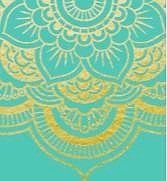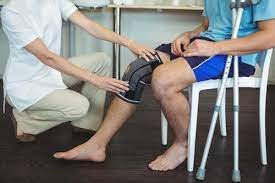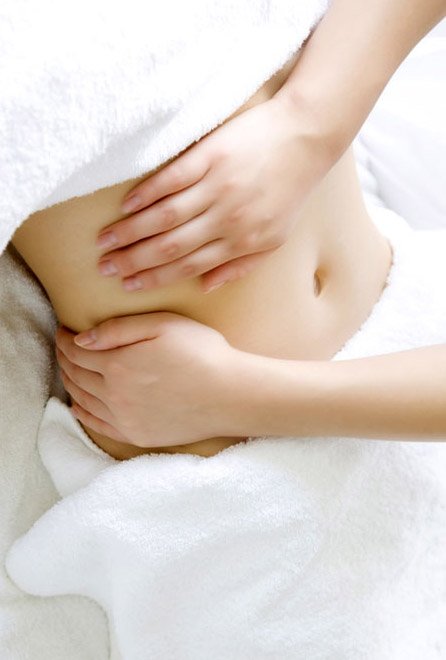

Services
Women’s Health
Osteopathic Manual Therapy can assist in improving many common women’s health related concerns, including: menstrual pain, pelvic floor weakness, frequent or urgent urination, incontinence, fibrosis, cystitis and fertility.
Having completed a Bachelors in Health Science specializing in Midwifery before studying Osteopathy, Karina has an in-depth understanding of the complexity and multifactorial contributors to a number of women’s health issues and can assist in improving symptoms and quality of life by using a variety of osteopathic techniques including spinal and pelvic mobilizations, as well as gentle visceral and craniosacral techniques.
Pregnancy and Post-partum
Pregnancy results in a multitude of physical, hormonal, chemical and emotional transitions. A mother’s body undergoes enormous changes during the whole process and there are many more changes occurring than the growing abdomen. The mother has to gradually adapt to the extra weight of baby, fluid and placenta during the pregnancy. As the body is adapting to carrying this extra weight, it may impose some physical strain on all the organs and tissues. As the baby grows inside the uterus, the mother’s body has to provide additional space, thereby requiring an adaptation of her posture. This causes changes in the body’s centre of gravity and shape of the spine.
Previous pregnancies and injuries may also have an effect on the mechanical adaptations of the spine and pelvis, whilst illnesses may have a relevance on the state and quality of tissues. These factors, along with the natural relaxation of the ligaments in preparation for birth, give rise to the increased probability of concerns including:
low back pain & sciatica
neck and shoulder pain
headaches
ligament pain in the pelvic joints
symphysis pubic pain
rib pain
perineal tensions; labor preparation
circulatory problems
digestive problems
Osteopathic treatments during pregnancy are very gentle and safe for the baby and the mother. Tissue adjustments release tensions and improve the whole body’s mobility often allowing for better positioning of the baby, more fluidic movement of the organs and the connective tissues and optimal functioning of all the systems investing in the mother and the labour to come.
Post PartumOsteopathy is also of great help to the mother after childbirth, whether the birth was performed with or without medical interventions. After childbirth, there is a the pregnant woman tissues have undergone a certain level of strain that should preferably be corrected without too much delay in order to avoid future problems.
Newborns
Osteopathy is a very GENTLE, non-manipulative and safe approach for babies and growing children, enabling the inherent ability of the body to release stresses and balance itself.
Sometimes a difficult birth, falls and accidents, and even the rapid growth of the child’s body can all contribute to problems that may hamper the normal development of the babies bones, joints, tendons, ligaments, and the muscles covering them.
Routine osteopathic care is helpful for newborns for the
Evaluation of neuro-motor skills
Telling their birth story/ unwinding after birth
Breastfeeding/ latching issues
Osteopathy is helpful in reducing the symptoms of a range of childhood conditions. If your child suffers from more serious issues, I may be part of a team of professionals who could assist in his or her therapy.
Some areas include:
Digestive issues
Colic
Torticollis (wry neck)
Plagiocephaly (flat head syndrome)
Chronic ear infections
Developmental dysplasia on the hips (clicky hips)
Eczema
Cerebral palsy, seizures
Attention deficit disorder (with or without hyperactivity)
High spectrum autism
Paediatrics
As children mature, they generally grow out of most of the crying, fussiness, difficulty sleeping and feeding etc. that they may have experienced as young babies. However, if the retained strain patterns and moulding are not treated, they may begin to suffer from secondary effects as they continue to grow and develop. This may make it difficult to sit still and focus, and may result in poor concentration affecting behaviour and learning.
Osteopathy can help with many paediatric conditions including:
Bed wetting
Behavioural problems and hyperactivity
Chest infections
Clumsiness
Delayed growth, growing pains
Difficulties with fine and gross motor skills
Ear infections (otitis media)
Headaches and migraines
Learning difficulties
Sinus problems and mouth breathers
Scoliosis, back & neck/shoulder pain
Poor posture
Playground injuries, post-concussion syndrome
Acute/chronic musculoskeletal pain
Sprains, fractures, tendinopathy, rheumatoid arthritis, osteoarthritis, scar tissue, back pain, joint pain, muscular tension/spasms, plantar fasciitis, degenerative disc disease, scoliosis, disc herniation, carpel tunnel syndrome, TMJ dysfunction etc.
Reduced acute and chronic pain and stiffness in joints and muscles
Help with joint osteoarthritis, trigger points, tendinitis/tendinopathy/tendinosis
Mitigate spinal problems caused by poor posture or spinal disk injuries
Increased range of motion in joints
Improved posture alignment
Relief from acute or chronic headaches and migraines
Reduced scars and adhesions (bands of scar tissue)
Help with trauma resulting from accidents (sports injuries, motor vehicle injuries, etc.)
Alleviate thoracic outlet syndrome
Cranial Sacral
Cranial sacral osteopathy is a non-invasive subtle type of bodywork that relieves compression in the bones of the head that are connected by sutures, the sacrum and the spinal column. Cranial sacral therapy (CST) can have a profound effect on the body by improving the circulation of all body fluids especially cerebrospinal fluid that protects the spinal cord and brings nutrition to the brain. In addition, CST calms the nervous system and removes patterns of strain throughout the body. It is applicable to all ages, from the newborn baby through to the elderly. Treatment provides a very gentle manipulation within the cranial sacral area to calm, relax and heal.
While it can be highly effective at relieving symptoms, cranial sacral osteopathy aims to treat the whole person not just the condition, so a very wide range of situations including the following, may benefit from treatment:
chronic headaches/ migraines
TMJ syndromes
Epilepsy, seizures
Dementia
Brain tumor
Neuralgia
Cerebral palsy
Learning disabilities, ADHD
Stress disorders, insomnia, vertigo,
Anxiety and depression
Ear infection
Sinusitis, sinus infection,
Whiplash,
Fibromyalgia,
Fascial adhesions,
Post-concussion syndrome
Autism
Chronic neck and back pain
Menstruation conditions, hormonal imbalances, sacroiliac joint ( SI ) pain
Anxiety and Depression
Anxiety and depression often stem from patterns set by the autonomic nervous system (ANS) reactions to traumatic early life experiences. These patterns persist and are embodied, causing physical ailments. Osteopathy is an effective tool to complement other cognitive or somatic therapies to help you with anxiety, depression, and trauma.
Learn how to recognize the triggers and patterns of your nervous system with the help of an osteopathic intervention. Together, we can find ways for you to free yourself of coping patterns in your body and teach you how to self regulate and soothe your ANS.
Concussions
A concussion results from a force directed toward the cranium causing an altered level of consciousness and resulting in neurologic dysfunction.
As an integrated part of the concussion and traumatic brain injury recovery team, osteopathic care helps recover the nervous system function focused on helping the brain reduce its inflammation. Osteopathic manual techniques can help to restore overall daily function alongside concussion protocols for safely and successfully returning you back to activities and work. Key factors that contribute to the success of rehabilitation involve removing the traumatic imprint, treating any areas of the body that impede the circulation of fluids and respecting the body limitations and healing timelines. Osteopathic manual techniques may include spinal mobilization, visceral manipulation and treatment of the cranio-sacral unit such as the brain and spinal cord. If you are concerned about any medical pathology and /or head trauma, always consult your physician prior to exploring Osteopathic Manual Therapy.
Pre and Post Surgery
Although the body can heal itself after surgery, it often needs some help. Osteopathy before and after surgery can help:
Increase stamina
Restore range of motion
Avoid loss of muscle mass
Reduce the effects of scar tissue
Reduce complications of surgery
Shorten recovery time and hospital stay
Lessen pain
The ultimate goal will be to help you return to the activities and sports that you were performing prior to the surgery. The time frame for rehabilitation and return to these activities will depend on the injury, surgery performed and each individual’s presentation.
Visceral / digestive
Visceral manipulation is a hands-on therapy based on the principle that organs have mobility in response to the body moving and natural functions. If organs cannot freely move, adhesions and displacement can occur, leading to pain, dysfunction and poor posture. The visceral system includes the internal organs of the body, such as the liver, stomach, gallbladder, kidneys, spleen, uterus, bladder, pancreas and intestines. Fascia and ligaments attach the organs of your digestive tract to neighbouring organs and to the deep abdominal wall and diaphragm. There are also attachments to your ribs, pelvis and spine.
In visceral manipulation, the motion of the organ itself is addressed, whilst ensuring that the level of the spine innervating these organs is mobile and not in distress. A spinal restriction can lead to altered nerve signalling to the organs supplied by that vertebra. If altered nerve signalling persists, dysfunction can manifest in the organ over time causing digestive problems. This sends a distressed signal back to the spine causing more soft tissue and vertebral restriction, creating a “facilitated segment” of that part of the spinal cord, thus perpetuating the pain cycle.
When you seek digestive issues treatment for example, we pay attention to the organs of your digestive tract: esophagus, stomach, small intestine and large intestine (colon). Organs like your liver and pancreas also play a role in digestion problems. Your vagus nerve, the primary nerve supply of your entire digestive tract, is parasympathetic in nature dubbed “rest and digest”. This is balanced by the sympathetic nerve supply of your digestive tract from T5 in the mid-back down to L2 in the lower back.
In health, there is a relative balance between the rest and digest function of your parasympathetic vagus and the fight or flight response of your sympathetic nervous system. If your sympathetic nervous system is in overdrive because of continued stress, or pain of physical or emotional origin, the balance between the two can be disrupted.
Stress can lead to digestive disorders, interfere with peristalsis, cause sphincters to improperly open and close, affect stomach acid production, permeability of the gut wall and gut bacteria imbalance.
Some common symptoms osteopathic practitioners treat are irritable bowls, bloating, constipation, sluggish digestion, gastrointestinal pain and symptoms of burning or acid reflex.
Osteopathic manual therapy techniques may improve overall motility, mobility and circulation of the digestive system, while appreciating the osteopathic philosophy that the body has a natural ability to self-regulate and heal itself. If you are concerned about any medical pathology and /or disease, always consult your physician prior to exploring Osteopathic Manual Therapy.

“Karina is a compassionate and gifted osteopath who is very passionate about her work. She is a wealth of knowledge and very intuitive. Great with kids too as her kind heart and gentle touch help people of all ages feel safe.” -MC
“My second pregnancy went so much smoother than my first and I believe my regular appointments with Karina throughout my pregnancy and after giving birth played a huge part in this. She helped with all the little and big pains, the stress, and the preparation for birth. She also helped my body come back to a happy and healthy place post-partum. To have an osteopath in town who also knows so much about pregnancy is a huge blessing for this community.” -LN

“I highly recommend Karina Gregory as an Osteopathic Practitioner. She was able to assess my concerns and provide treatment that relieved my discomfort and addressed the root issues. The treatments were gentle and profound again demonstrating her extensive knowledge of the human body.” - SE
“Karina always seems to know exactly what my body needs for treatment, even when I have multiple areas with pain. After every session, I leave feeling relaxed, more mobile and in less pain. The Kootenays are lucky to have someone with such a thorough knowledge of anatomy, paediatrics and maternity.” - MC

“My daughter first saw Karina when she was 2 weeks old. Karina has helped us move through some challenging breastfeeding and latching issues and stomach and digestion issues. We were impressed with how much Karina was able to help our baby. Her vast knowledge in this area is a true benefit to the profession and this community.” - MM
“I have seen Karina for various physical issues including a shoulder injury, foot injury and concussion. I felt safe in her care and felt changes right after my first session. She takes the time to figure out what’s going on at a deep level, and I feel that is a big part of the success. She is gentle, easy to be with and clearly thorough and knowledgeable. I wouldn’t hesitate to recommend her.” - RH









